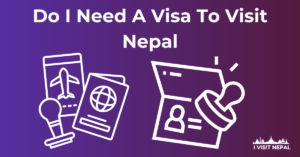Unveiling Nepal’s Currency: An Introduction
Introduction to the Nepalese Currency: The Nepalese Rupee (NPR)
Nepal, a land of towering Himalayas, rich cultural heritage, and warm hospitality, is also home to a unique and fascinating currency: the Nepalese Rupee (NPR). Whether you’re a seasoned traveler or planning your first trip to this enchanting country, understanding the Nepalese currency is essential for navigating its markets, paying for services, and immersing yourself in the local culture. In this guide, we’ll explore the NPR’s history, design, exchange rates, and practical tips to make your financial transactions in Nepal smooth and secure.
Understanding the Significance of the Currency for Travelers and Tourists
The Nepalese Rupee is more than just a medium of exchange; it reflects the country’s identity and plays a crucial role in the daily lives of its people. For travelers, a solid understanding of the NPR is key to managing expenses, avoiding scams, and making the most of your journey. Whether you’re haggling in Kathmandu’s bustling markets, trekking in the Annapurna region, or simply enjoying local cuisine, familiarity with the NPR will enhance your travel experience.
The Nepalese Rupee: A Closer Look
Historical Context of the Nepalese Rupee
The Nepalese Rupee was introduced in 1932, replacing the previous currency system based on the silver mohar. Initially pegged to the Indian Rupee, the NPR has evolved into a distinct currency, reflecting Nepal’s growing economic independence. Over the decades, the currency has undergone several changes in design and value, shaped by political shifts, economic reforms, and the global financial landscape.
Current Denominations of Notes and Coins
Today, the Nepalese Rupee is available in various denominations, catering to different needs and transaction sizes. The notes range from NPR 1 to NPR 1000, while coins are available in values from NPR 1 to NPR 10. The most commonly used notes are NPR 10, NPR 20, NPR 50, NPR 100, NPR 500, and NPR 1000, with smaller denominations often used for minor transactions.
Designs and Security Features of NPR Currency
Nepalese currency notes are not just functional but also visually appealing, featuring images of prominent cultural symbols, historical figures, and the majestic Himalayas. The design elements reflect Nepal’s rich heritage, making each note a piece of art. Additionally, the currency includes modern security features like watermarks, security threads, and micro-printing to prevent counterfeiting and ensure authenticity.
Decoding the Value: Exchange Rates and Determinants
Factors Influencing the Exchange Rate of the Nepalese Rupee
The value of the Nepalese Rupee is influenced by various factors, including Nepal’s trade balance, inflation rates, political stability, and the global economic environment. Additionally, its peg to the Indian Rupee plays a significant role in determining its exchange rate. Understanding these factors can help travelers anticipate fluctuations and plan their finances accordingly.
Where to Find Reliable Exchange Rate Information
When traveling to Nepal, staying updated on the latest exchange rates is crucial. Reliable sources include the official website of the Nepal Rastra Bank, local banks, and reputable currency exchange websites. Mobile apps that track currency rates can also provide real-time information, helping you make informed decisions.
Tips for Understanding Exchange Rates While Traveling
Understanding exchange rates can be tricky, especially with the added complexity of service fees and commissions. It’s advisable to familiarize yourself with the current rate before exchanging money. Keep an eye on market trends, and if possible, exchange larger amounts at once to minimize the impact of fluctuating rates.
Currency Exchange in Nepal: Knowing Your Options
Locations to Exchange Currency in Nepal
Nepal offers several options for currency exchange, each with its own advantages and considerations. Banks are the most reliable option, offering official rates and secure transactions. ATMs are widely available in cities and tourist areas, allowing you to withdraw local currency directly from your account. Additionally, currency exchange counters at airports, hotels, and major markets provide convenience, though their rates may vary.
Comparing Rates: Formal Banking Institutions vs. Local Money Changers
While banks and ATMs offer the most secure and regulated rates, local money changers might offer slightly better deals, especially in tourist-heavy areas. However, caution is advised when dealing with informal money changers, as the risk of scams or counterfeit notes is higher. Always count your money carefully and ensure you’re getting the correct amount.
Tips on Finding the Best Exchange Rates in Nepal
To get the best exchange rates, it’s essential to shop around. Compare rates offered by different banks, ATMs, and exchange counters. Be mindful of service fees, which can vary between providers. Timing your exchange when the rates are most favorable can also make a significant difference, especially for larger amounts.
Navigating Cash and Digital Payments in Nepal
Cash Usage in Daily Life in Nepal: A Predominant Choice
In Nepal, cash remains the predominant method of payment, especially in rural areas and among small vendors. While larger hotels, restaurants, and shops in urban areas may accept credit cards, cash is king in most transactions. It’s advisable to carry small denominations for everyday expenses, as larger notes may be difficult to break, particularly in remote regions.
Introduction to Digital Payment Options Available in Nepal
With the rise of technology, digital payment options are becoming increasingly popular in Nepal, particularly in cities like Kathmandu and Pokhara. Mobile payment platforms such as eSewa, Khalti, and IME Pay are widely used for bill payments, online shopping, and even peer-to-peer transfers. These platforms are convenient and secure, though not universally accepted, particularly in rural areas.
Handling Payment Modes: When to Use Cash Versus Digital Transactions
When in Nepal, understanding when to use cash versus digital payments can save you time and hassle. Cash is preferred for small purchases, tipping, and transactions in rural areas. Digital payments are ideal for larger transactions, paying bills, or when you want to minimize the risk of carrying large amounts of cash. Having a mix of both options ensures you’re prepared for any situation.
Avoiding Pitfalls: Currency Exchange Best Practices
Understanding and Avoiding Common Currency Exchange Scams
Like in any tourist destination, currency exchange scams can be a risk in Nepal. Common scams include short-changing, counterfeit notes, and rigged exchange rates. To avoid falling victim, always exchange money at authorized outlets, count your money carefully, and be wary of deals that seem too good to be true.
The Importance of Exchanging Money at Authorized Outlets
Exchanging money at authorized outlets, such as banks, licensed exchange counters, and ATMs, ensures you’re getting a fair deal and genuine currency. Authorized outlets are regulated and provide receipts, which can be crucial if you encounter any issues later. Avoid exchanging money on the street or with unlicensed operators, as the risks far outweigh the potential savings.
Best Practices for Carrying Currency in Nepal to Ensure Safety and Convenience
Carrying currency in Nepal requires a balance of convenience and security. It’s advisable to carry a mix of small and large denominations to cover various expenses. Keep your money secure by using a money belt or a hidden pouch, and avoid displaying large amounts of cash in public. Additionally, consider carrying a backup payment method, such as a credit card or a prepaid travel card, in case of emergencies.
Cultural Tidbits: The Rupee’s Place in Nepalese Life
Cultural Aspects of Money in Nepal
Money in Nepal is not just a medium of exchange but also holds cultural significance. The Rupee is intricately linked to daily life, with its images of deities, historical figures, and natural landmarks reflecting the nation’s identity. The way money is handled and used in Nepal often carries cultural connotations, from rituals involving monetary offerings to the traditional practice of giving money as a gift during festivals.
Significance of the Rupee in Festivals and Traditions
During major festivals like Dashain and Tihar, the Nepalese Rupee plays a central role in various rituals and celebrations. For instance, during Tihar, the festival of lights, sisters place tika on their brothers’ foreheads and offer them money as a symbol of blessings and protection. Similarly, monetary gifts are exchanged during Dashain, symbolizing prosperity and goodwill.
The Role of Currency in Nepalese Art and Symbolism
The designs on Nepalese currency are more than just decorative; they carry deep symbolism. The depiction of Mount Everest on the NPR 1,000 note, for example, highlights Nepal’s pride in its natural heritage. Similarly, images of temples, wildlife, and cultural icons on the currency serve as a reminder of the country’s rich traditions and history, making the Rupee a cultural artifact in its own right.
Traveller’s Essentials: Preparing for Your Trip to Nepal
Estimating Your Budget: How Much Money to Exchange Before Arrival
Planning your budget before arriving in Nepal can save you from unnecessary stress. Consider your daily expenses, including accommodation, food, transportation, and activities, and exchange enough money to cover your initial days in the country. While ATMs are available in cities, having cash on hand upon arrival is essential, especially if you’re heading straight to more remote areas.
Understanding Currency Restrictions and Limits on Import/Export
Nepal has specific regulations regarding the import and export of currency. Travelers can bring in up to NPR 5,000 without declaring it. For foreign currency, the equivalent of up to USD 5,000 can be brought into the country without declaration. However, if you plan to carry larger amounts, it’s essential to declare it upon arrival. Similarly, exporting large sums of Nepalese Rupees is restricted, so be mindful of these limits when planning your departure.
Essential Information to Have on Hand Regarding Currency While Traveling
When traveling in Nepal, it’s helpful to have essential currency-related information readily available. This includes the current exchange rate, locations of nearby ATMs and banks, and the contact details of your financial institution. Additionally
, carrying a small notebook or using a mobile app to track your spending can help you stay within your budget and avoid running out of cash unexpectedly.
In Case of Emergency: Lost or Stolen Money in Nepal
Immediate Steps to Take When Money Is Lost or Stolen
Losing money while traveling can be a distressing experience, but knowing the right steps to take can mitigate the impact. If you lose your money or it is stolen, the first step is to report it to the local police and obtain a police report, which may be required for insurance claims. Notify your bank immediately if your credit or debit card is lost or stolen to prevent unauthorized transactions.
Contacting Local Police and Financial Institutions
Nepal’s police force is generally helpful and can assist tourists in cases of lost or stolen money. Visit the nearest police station to file a report and obtain a copy for your records. Additionally, if you need to contact your financial institution, many major banks have international toll-free numbers that can be dialed from Nepal. It’s a good idea to have these numbers saved in your phone or written down in a secure place.
Protective Measures to Minimize the Risks Before and During Your Trip
To minimize the risk of losing money while in Nepal, take a few precautionary measures before and during your trip. Before traveling, make photocopies of important documents like your passport, credit cards, and travel insurance, and store them separately from the originals. During your trip, avoid carrying large sums of cash at once, use a money belt for added security, and be cautious when withdrawing money from ATMs, especially in crowded areas.
Conclusion
The Nepalese Rupee is more than just a currency; it’s a gateway to understanding Nepal’s cultural and economic landscape. By familiarizing yourself with the NPR, you can navigate your financial transactions with confidence, avoid common pitfalls, and immerse yourself more deeply in the vibrant life of Nepal. Whether you’re trekking through the Himalayas, exploring ancient temples, or simply enjoying the local cuisine, a little knowledge about Nepal’s currency will go a long way in enhancing your travel experience.



